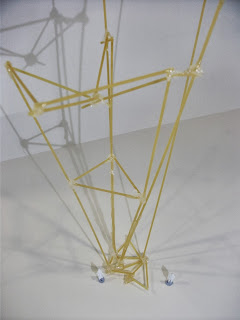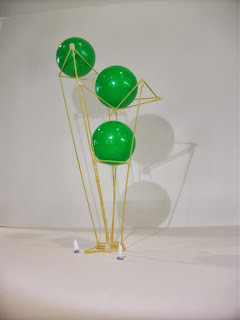After the exploratory stage of the Design and Media course had ended, but before we were to go into our chosen pathways, we spent a day developing our technical skills through life drawing. We started the day doing a few conventional 5-minute drawings, encouraged to use charcoal as it gives looser impressions.
Having done life drawing before I have always enjoyed it as the quick drawings and range of techniques are interesting for me. I can often fall into the trap of being a bit timid and a perfectionist in my work and so these kinds of exercises loosen up my drawing style and I feel are hugely beneficial for my overall skills, techniques and approach to drawing and other forms of creativity.
 |
| Graphite Stick and Oil Pastel Drawing poses with a prop - 5 mins |
 |
| Right Handed Drawing - 5 mins - Graphite Stick |
 |
| Drawing with Metre Long Bamboo Stick With a Graphite Stick Sellotaped to the End - 5 mins |
 |
| Drawing with Bamboo Stick (see above) Marker Pen and Blind Drawing (right) - 5 mins and 2 mins |
 |
| Charcoal Drawing using only horizontal lines - 5 mins |
 |
| Drawing with Graphite Stick Sellotaped to Elbow - 3 mins |
We spent the day doing a series of quick drawings in varying media and sizes. As is typical for life drawing workshops we used a variety of unusual techniques to improve our sense of shape and make us think about the kind of marks we are making on the page and the impression the give. We were also encouraged to focus less on outline and focus more on textures and tones within the body. The fluid and fast-paced nature of this was very enjoyable. For our last exercise of the day we spent 20 minutes focusing on one section of the body, thinking only about tone. I focused on a section of the model's back and hand while she was lying down and used a 4B Graphite stick to try to achieve a textured and layered tonal study.














































